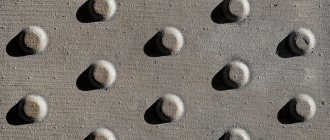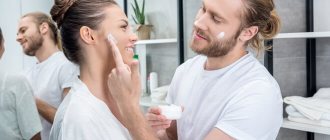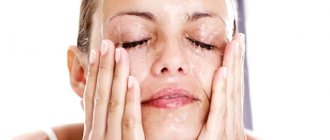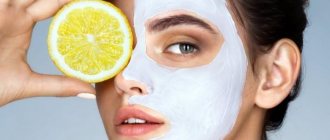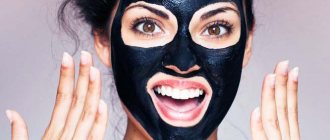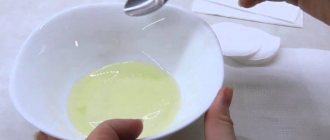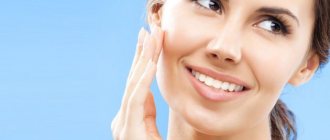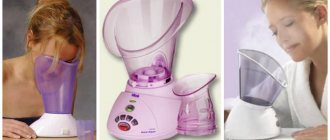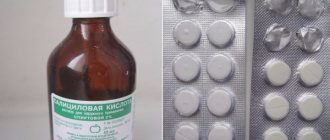Causes of blackheads
The issue of clogged skin pores most often worries those with combination/oily skin. However, people with dry and sensitive skin may also experience blackheads on their nose, cheeks, chin, and forehead. They spoil the appearance and often become inflamed, turning into pimples and boils.
Pores are clogged by epithelial cells - they tend to slough off regularly - and by thick sebum, if more is secreted than it should be. In medicine, blackheads are called comedones. They are open and closed.
Closed comedones are grayish-whitish in color and look like small nodules under the skin. It is difficult to squeeze them out; they often become inflamed. Open comedones are typical for people with wide pores. They have a gray-black color, are easily released from the contents when squeezed, and rarely become inflamed.
Causes of blackheads:
- Poor nutrition. This includes excessive consumption of sweets, fatty foods, flour, strong coffee, and alcohol.
- Poor quality skin care. This means the use of low-quality, expired cosmetics or its complete absence.
- Diseases of the gastrointestinal tract, constipation.
- Living in an area with a humid climate.
- Polluted environment.
- Smoking.
Any of the reasons can lead to excessively intense work of the sebaceous glands, which after a short time will cause the appearance of blackheads. There are several ways to tidy up your face and get rid of them:
- go to a beauty salon, paying a decent amount for the services;
- organizing a beauty salon at home by purchasing the necessary ingredients is economical and no less effective.
What additional components are best to use in clay masks against blackheads?
As indicated, excipients play a big role in the effectiveness of the finished remedy for comedones. The final choice depends on what kind of clay you use, but most options are universal and work with all types. The following components can be distinguished:
- Kefir, milk and other dairy products. Ideal for people with dry skin. By using such masks, you not only get rid of blackheads, but also effectively moisturize the skin.
- Salicylic acid. A common skin drying agent. Suitable for people with problematic oily skin. Also sometimes used by patients with a combination type of skin.
- Alcohol. Some cosmetologists recommend that their patients simply wipe their facial skin with alcohol occasionally. Naturally, these recommendations are exclusively for people with oily skin. Hence, use this combination to remove blackheads only if you have blackheads.
To understand the principle by which masks made from different types of clay work against blackheads, you need to consider at least one specific example. The video below shows the process of preparing an effective white clay mask. Watch the short video until the end to get a clear idea:
Any cosmetic clay helps against blackheads. The question is what skin type do you have and what methods are you going to use.
The use of clay in cosmetology
The use of clay for skin rejuvenation and healing began several thousand years ago - in Ancient Egypt. Today this substance is actively used to relieve inflammation, cleanse pores, dry, moisturize, and nourish different skin types.
Clay of different shades is suitable for each type. Its properties are enhanced by concentrates - decoctions, infusions, juices - from medicinal plants.
Clay for the face against blackheads is used in cosmetology as masks and washes.
Reviews about the use of the product
I believe that the effect can be achieved only in two ways: cleansing by a cosmetologist and a clay mask for blackheads. I have already tried a bunch of different drugs, but they are not even close to these two.
Lina
For a long time, the condition of my skin left much to be desired. But I learned about masks, and it helped. Of course, it was not possible to completely get rid of blackheads and pimples, but the scale is no longer so significant.
Julia
I am a big fan of various masks that you can make yourself. In my arsenal I also had clay for blackheads on my face. And this is the product I like most, it is inexpensive, practical and effective.
Alla
Originally posted 2018-03-28 08:44:59.
Varieties of colored clay
The color of clay depends on its mineral composition. It can range from pure white to black.
White clay is a natural antibiotic and has a slightly alkaline reaction. Its composition is dominated by aluminum and silicon oxides. The use of white clay in the form of masks allows you to improve your complexion, tighten your oval shape, and get rid of sagging skin in a short time.
Black clay, in addition to the classic set of microelements - manganese, calcium, aluminum and others - contains strontium and quartz. It is used to treat oily skin. Masks based on black clay normalize the functioning of the sebaceous glands, treat acne, acne, cleanse pores, rejuvenate, and provide a visible lifting effect.
Intermediate colors are due to the predominance of a certain trace element:
- Red clay from black dots contains oxides of trace elements Fe, Mg, Ca, Al, Si. The red color is given by the high content of hematite - Fe2O3. Red clay masks and washes remove free radicals and toxins from skin cells, relieve inflammation, regulate the functioning of the sebaceous glands, and moisturize. Red clay has an exfoliating effect, effectively removing particles of dead skin.
- Yellow clay from blackheads contains oxides of magnesium, iron, and potassium. There is no aluminum. Masks and washes made from yellow clay tighten pores, remove toxins from the skin, heal wounds and abrasions, and relieve inflammation.
- Green clay from blackheads contains oxides of silver, magnesium, silicon, iron, selenium, aluminum, cobalt, molybdenum. Silver oxide gives it a rich green color. The more it is, the “greener” the clay. Green clay is suitable for any skin type. It normalizes the functioning of the sebaceous glands, mattifies, moisturizes dry/sensitive skin, treats pimples, boils, acne.
- Blue clay from blackheads has a rich mineral composition. In addition to aluminum, iron, magnesium and other trace elements, it contains radium. The more it is, the “blue” the color of the clay. Masks and washes based on it relieve acne, pimples, inflammation, increase blood circulation in the upper layers of the skin, and stimulate the production of collagen and elastin.
Mask made of black and white clay. Variety of cosmetic clays
Before you test the magical effect of clay masks on yourself, study the properties of clay of different colors, because each of them will have its own effect on the skin of the face.
- 1. White clay
Drying masks made from white clay are recommended for those with oily and problem skin, as this type of clay perfectly tightens pores, absorbs excess oil, and has a whitening and anti-inflammatory effect. It improves complexion, makes its oval clearer, and gives the skin a feeling of freshness.
- 2. Blue clay
Anti-inflammatory blue clay mask contains a lot of the most beneficial microelements and mineral salts. It treats acne, heals small wounds, cleanses the skin of impurities, tones, and improves complexion. It also has a rejuvenating effect: these are the masks that smooth out facial wrinkles. Using blue clay, freckles and other pigmented rashes are lightened. Masks, which contain blue clay, activate subcutaneous blood circulation and normalize the metabolism occurring in skin cells.
- 3. Green clay
Green clay cleansing mask is very widely used in cosmetology. It contains skin-beneficial microelements that restore the skin's hydrobalance, so it is recommended that those with dry skin try these masks. It is no stranger to a rejuvenating effect: green clay in such masks smoothes and tightens the skin, making it elastic.
- 4. Red clay
Rejuvenating red clay + face masks made from it give a simply amazing effect: wrinkles are smoothed out, facial contours become clearer. A mask made from red clay is ideal for sensitive skin, as it will soothe irritated skin and relieve any inflammation.
- 5. Pink clay
If pink clay is available to you, face masks made from it are suitable for normal skin types that need to be nourished and moisturized from time to time.
- 6. Yellow clay
Yellow clay masks are recommended for use for acne and other skin inflammations. They have a tonic effect and improve complexion.
- 7. Black clay
An anti-toxic black clay mask removes harmful substances from the skin, deeply cleanses pores, removes dead cells and various types of impurities. Microelements contained in black clay (magnesium, strontium, iron, calcium, quartz) act on the skin better than any scrub.
- 8. Gray clay
Masks made from gray clay, which is mined from the seabed, moisturize dry skin, enrich and nourish it.
So carefully study the properties of each of the described types of clay, choose the color that will be most optimal for your skin type and decide which one will become the basis of your cosmetic mask.
Features of using clay when working with the face
Industrially produced clay for blackheads is purchased at the pharmacy. It is presented as a finely ground powder without additives. Before using the mask, you need to work with your face so that cleansing is as effective as possible:
- Wash your face with a scrub. Use a ready-made one from a perfume store or prepare a natural one from purchased clay powder.
- Dry your face.
- Prepare the mask according to the recipe.
- Take a bath for your face. Steaming the skin is necessary to open the pores as much as possible. After this, removing sebum from them will become easier. Steam, for example, over a pan of boiled potatoes for 5 - 7 minutes.
- Apply the mask to your face using your fingers or a brush. Pay special attention to the T-zone. Do not apply the mask to the delicate skin of the eyelids, around the eyes and mouth.
- The duration of use depends on the skin type. For oily and combination skin, you need to walk with a mask for 15 - 20 minutes. You should feel a slight tightening. If the skin is sensitive or dry, reduce the duration to 5 - 10 minutes. The mask should not dry out!
Woman with clay facial mask in beauty spa.
Wash off any mask with slightly warm water, then rinse your face with cool water.
After removing any remaining moisture, apply a light nourishing cream. After half an hour, remove the excess with a paper napkin.
Masks and washes: ratios of ingredients
To properly prepare a classic mask, you will need clay and purified, preferably bottled, water. Clay powder is poured into water. The ratio of ingredients depends on the consistency of the final product. Clay for blackheads is diluted with water to a thick paste that does not flow, but is easily applied to the skin and dries for a long time.
To obtain a composition of this consistency, take:
- 2 - 3 tbsp. spoons of clay powder;
- 3 - 4 tbsp. spoons of water.
Leave the dishes with clay for half an hour until the water is completely absorbed. After this, mix the mixture thoroughly until smooth.
Prepare clay water for washing your face:
- Pour one tablespoon of clay into a glass of water and stir.
- Use this solution not only for washing, but also as a makeup remover, including eye makeup, or a toner.
In what form is clay for blackheads most often used?
Substances of different colors can be purchased at almost any pharmacy. And they are all sold in powder form. Inexperienced patients who have heard somewhere that clay helps to cope with skin problems have little understanding of what exactly to do with such a powder; they simply dilute it with water and apply it to the skin. This is an extremely wrong approach.
The main way to use cosmetic clay is by preparing and using special masks. This is extremely important, since a lot depends on the auxiliary components that you use in preparation. So, the clay itself is well suited for literally all skin types. But, for example, using a mask with lemon juice, you can dry out the skin. In the case of dry skin, it is better to use a homemade product based on, for example, essential oil, kefir or sour cream.
There are a large number of clay masks. You can make the final choice based on your own skin type. Again, if you have problems choosing a specific drug, contact your dermatologist or cosmetologist for recommendations.
Cleaning your face from blackheads at home
To create a beauty salon at home you will need:
- Clay powder in the required quantity. Purchase several varieties of the substance to experiment and determine which color of clay gives the maximum effect on your skin.
- Purified water.
- A variety of medicinal herbs in accordance with the recipe for a mask or “wash”.
- Headband. It protects the hairline from getting into the clay solution.
- Glass, ceramic or plastic dishes, wooden spoon. These items are needed to mix the composition.
Metal utensils and spoons are excluded. Clay will quickly oxidize upon contact with them and lose most of its beneficial properties.
Medicinal herbs that enhance the healing effect
Face clay for blackheads is good on its own. It contains enough microelements to cleanse pores, relieve inflammation, and disinfect facial skin.
Medicinal herbs enhance this effect, so they are often used in the form of decoctions, infusions, juices that replace pure water, or mild peeling. In the latter case, clay for blackheads is mixed in the classical way using water. Pour the leaf powder of the selected herb or mixture of herbs into the mass and mix well.
If you decide to treat your skin for blackheads, you should have these ingredients on hand, depending on the recipe:
- rosemary, oil - kills pathogenic bacteria, frees the skin from free radicals, rejuvenates, treats acne, boils, blackheads, saturates dry skin with moisture;
- bergamot oil - anti-inflammatory, tightens pores, normalizes the functioning of the sweat and sebaceous glands;
- birch, leaves and buds - regulates the functioning of the sebaceous glands, provides a light matting effect;
- chamomile, herb - effectively treats pimples, blackheads, blackheads, perfectly heals wounds, disinfects;
- calendula, inflorescences - good moisturizing for dry skin, a natural antiseptic. wound healing, antibacterial, treats acne, pimples, boils;
- horsetail, green part - comprehensive care for oily skin;
- sweet clover, flowers and leaves - treats acne, boils, blackheads, kills most pathogenic bacteria, effective anti-inflammatory and cleansing;
- tea tree oil - a powerful natural antiseptic, has excellent wound-healing properties, dries out acne well, treats boils;
- aloe, leaf pulp, juice - a natural antiseptic, excellent wound healing, tonic, ideal for treating oily skin;
- butterbur, leaves and inflorescences - normalizes the functioning of the sebaceous glands, heals wounds, is a natural antihistamine, “stimulates” the immune system;
- St. John's wort, a herb - a natural antiseptic, treats acne, pimples;
- nettle, leaves and stems - cleanses, tones, heals, vitamin cocktail for oily skin
- plantain, leaves, juice - effectively treats acne, blackheads, normalizes sebum secretion;
- mint, leaves, stems - normalizes sebum secretion, has a mattifying effect;
- rowan, leaves - the best effect in the treatment of blackheads in the T-shaped zone;
- thyme, herb - moisturizing for dry and sensitive skin;
- and others.
All of the listed medicinal herbs are widespread, so you can collect them yourself. Rosemary, bergamot and tea tree oils are easier to buy at the pharmacy.
Green and blue clay mask against blackheads for oily skin with tea tree and lemon juice
To prepare it you will need:
- green and blue clay for blackheads - 1 tbsp. spoon;
- decoction of rowan leaves - 3 tbsp. spoons;
- tea tree oil - a couple of drops;
- juice of half a small lemon.
Mask for clogged pores and acne
The standard and easiest to use clay mask for blackheads is made from clay powder and water. To prepare it, you need to mix a tablespoon of clay with the same amount of cool water. It is very important to follow a certain algorithm:
- Pour the powder into a glass or plastic container.
- Pour in water and wait one minute until the powder swells.
- Mix all ingredients to obtain a homogeneous paste. The mixture should be thick.
- Apply the mask to problem areas of the skin where there are blackheads. In this case, you should avoid the area around the eyes.
The pore-cleansing mask should be left on for no more than 20 minutes. This time is enough for the pores to cleanse and narrow. To consolidate the result and have a more pronounced effect, the mask is applied 2 times a week for two months.
Other Ways to Clean Dirty Pores
If you don’t have clay on hand, but you have oatmeal or oatmeal and an onion, you can make a mask from them:
- Pour half a cup of cereal into a cup.
- Grind the onion head in a meat grinder.
- Mix the ingredients. If it is too dry, add a little purified water to get the mixture to the desired consistency.
- Place the mask on your face. The procedure lasts approximately 10 minutes, rinse off.
- Rub your skin with an ice cube. Make it from parsley juice - grind the greens in a meat grinder, squeeze out the juice, fill an ice tray with it and place it in the freezer.
When treating blackheads, change your lifestyle - eat right, take care of your face every day, and lead an active lifestyle. This will normalize metabolism and improve blood circulation.
Dear readers, if you liked the article, tell your friends about it, share it on social networks or leave a useful comment.
Vitamin mask with clay
To remove inflammation and blackheads from your face, you can use any recipe made from black clay. But if you also want to nourish your skin with vitamins, you need to add a special mixture of aloe, honey and apples to it. These components work perfectly together, and therefore will help tired and problematic facial skin in the best possible way. Immediately after the vitamin mask, the face will become radiant and healthy in appearance, and the blackheads will finally disappear after just a few procedures. It will require the following set of components:
- One tablespoon of prepared black clay.
- One teaspoon of applesauce.
- One and a half teaspoons of liquid honey.
- One tablespoon of aloe juice.
The clay must be diluted with water to obtain the required amount of mixture for the mask. Then you need to mix it with the rest of the ingredients and apply it to your face. It is better to lubricate problem areas with blackheads with a double layer of the composition. You can keep the mask for about 15-20 minutes, but no longer. Then it should be washed off with cool water and a nourishing cream should be applied to the face.
Which clay is better
Clay has long been known for its valuable and healing properties. It comes in different types:
Each of them differs not only in color, but also in composition and effect:
| Type of clay | Characteristic | Effect |
| White | Kaolin is the most common type. It is known for its antiseptic effect. It also brightens the skin well and makes it smoother. | Regulates sebum production, cleanses pores and prevents the appearance of comedones. |
| Blue | Anti-inflammatory product suitable for oily and combination skin types. | Deeply cleanses, dries, promotes rapid healing of wounds, eliminates blackheads. |
| Green | Marsh-colored clay can restore water balance, tighten the face and smooth out wrinkles. | Gently cleanses, helps reduce irritation and dry out acne, and also eliminates oily shine, thereby preventing the appearance of acne. |
| Gray | Suitable for dry and dehydrated skin, it is the most valuable type, since it is mined only at great depths. | Has a tonic, moisturizing and calming effect. Cleans perfectly. |
| Yellow | The composition of yellow clay helps to activate metabolic processes and saturate the skin with oxygen, making the face more fresh and well-groomed. | It copes well with inflammation, cleanses, soothes and reduces the number of comedones. |
| Red | Red clay is ideal for sensitive and delicate skin. It can be safely used by girls who are not suitable for any other type of product due to severe drying. | Soothes the skin, relieves irritation, redness, and keratinized areas. |
| Black | This type of clay copes better than all others with rashes of any type. Suitable for normal, oily and combination skin. | Cleanses, tightens pores and gets rid of rashes, including blackheads. |
